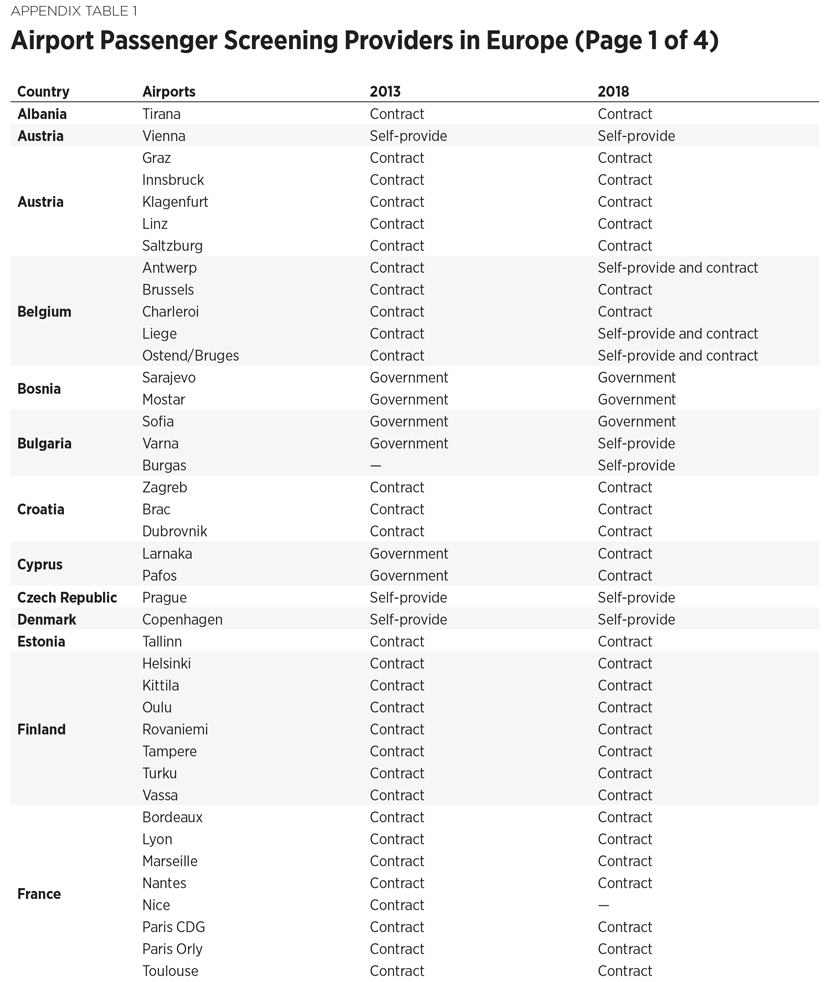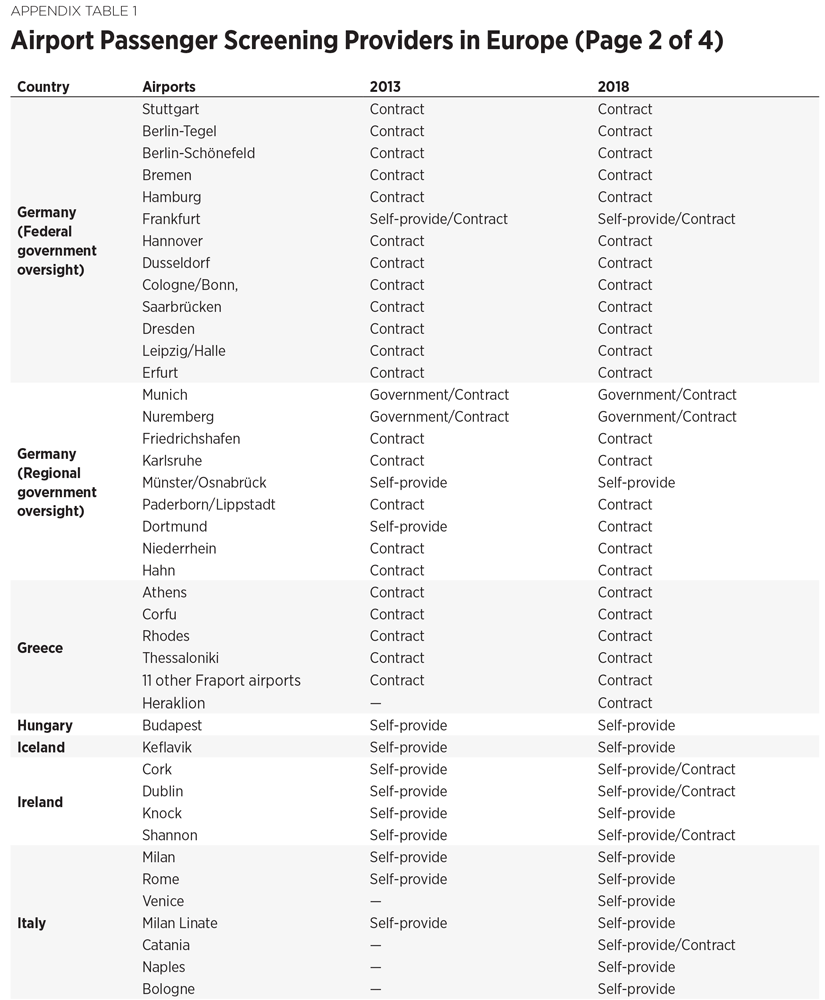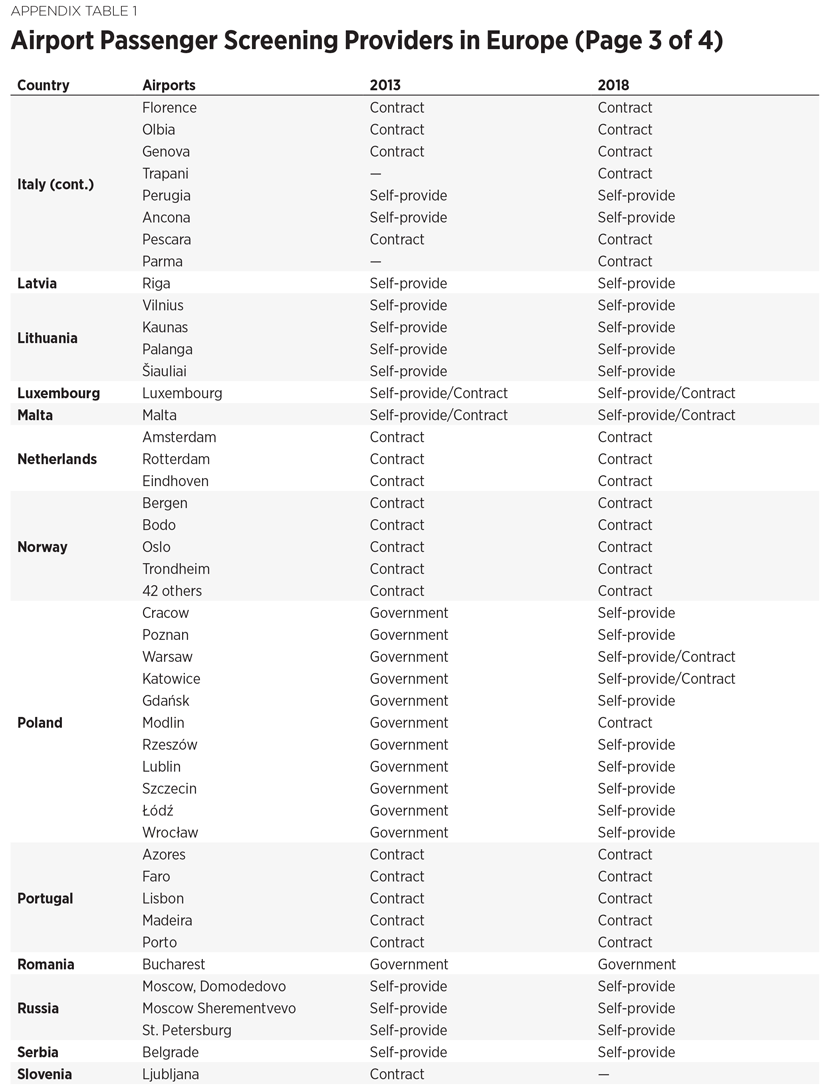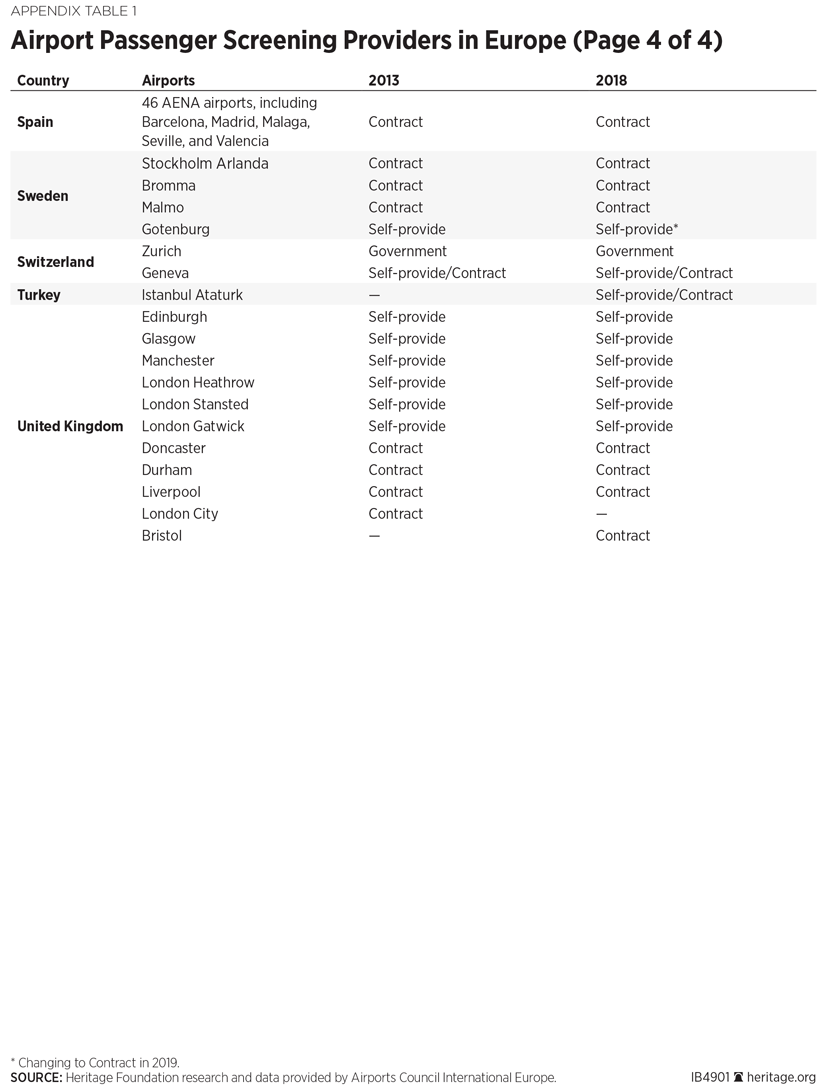The U.S. Transportation Security Administration (TSA) is a well-known government entity. Most Americans, however, are probably unaware that the TSA model—one government agency being both security regulator and security provider—is quite uncommon. In light of the significant funds that the U.S. spends on aviation security, along with the various problems such as failed red team tests and problems managing lines that have plagued the TSA in the past, policymakers looking to improve U.S. aviation security would be well served in exploring how other nations handle aviation security.
The Creation of the TSA
Before 9/11, aviation security was carried out by private security companies hired and paid for by airlines and airports. The Federal Aviation Administration (FAA) was responsible for security rules; as a civil agency focused on the technical safety of airplanes against accidents or nature, however, the FAA did not address security concerns as would an intelligence or law enforcement agency.
After 9/11, that all changed. In October 2001, Congress and President Bush created the TSA in order to protect U.S. aviation and other parts of the transportation system from malicious actors. By the end of 2002, the Homeland Security Act was signed into law, moving the TSA into the new Department of Homeland Security.
Significant debate over the screening workforce’s management marked the two months between 9/11 and the creation of the TSA. The Senate unanimously approved an entirely federal screening workforce; but much of the House of Representatives (along with President Bush) preferred a more limited federal role with airport screeners falling under federal oversight and supervision but not being federal workers. The Senate’s proposal eventually won out with only a small concession pilot program—which became known as the Screening Partnership Program—that would allow private screeners under strict TSA control.REF
Security Duties and Recent TSA Activity
The TSA handles all parts of aviation security. The TSA:
- Acts as regulator, setting rules on what passengers can bring on airplanes and how screeners are supposed to look for prohibited items.
- Oversees the acquisition and deployment of the various technologies used in the screening lines, ranging from specialized bomb detection equipment to various x-ray machines looking for weapons.
- Employs more than 40,000 security officers who are tasked with the front line screening duties.
- In recent years, the TSA has struggled to carry out these duties. In 2015, the results of an inspector general (IG) “red team” test of TSA screening were leaked, revealing that the team was able to slip 67 of 70 weapons past TSA screeners.REF The IG also criticized the TSA for personnel training and management, equipment maintenance, and acquisitions programs.REF Further tests and IG reports have indicated that issues with performance still persist,REF despite the TSA’s continued funding of approximately $7.5 billion.
Aviation Security in Other Nations
A 2013 Reason Foundation study, which examined the aviation screening services of European nations, found that the vast majority of airports have aviation screening services that are either self-provided by the airport or contract those duties out to a third party.REF At these airports, the government acts as regulator by setting and oversee the security rules, but does not provide the front line screening services. Only a handful of airports employ a government centric model akin to the TSA.
Since 2013, however, even more airports have moved away from the government model. In the figure below, the increasing dominance of self-provided or contracted aviation security is on display.
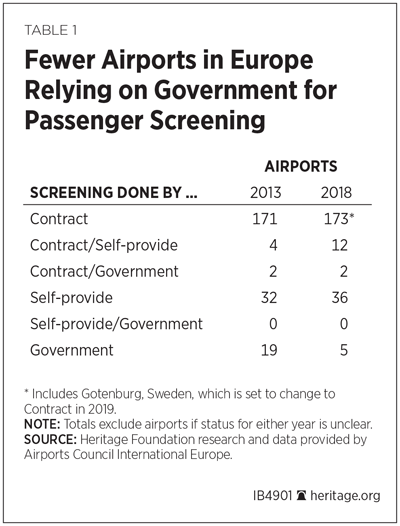
Note that this movement is only in one direction: No airports have gone from self-provision or contract to central government provision.
Security and the Private Sector
Among the numerous reasons for the non-government-centric aviation security model of these other nations, cost and accountability feature prominently.
- Cost. Canada and Europe spend dramatically less per passenger on aviation security and yet still meet the international standards for aviation security.REF Contractor or airport-hired screeners can be managed more efficiently than a large federal bureaucracy. Indeed, these costs are lower and still include a profit margin the contractor or airport.
- Accountability.REF The TSA sets its own rules. Where a regulated entity is its own regulator, there will always be a temptation to protect the whole of the organization. Under this model, security failures are handled in-house and the TSA cannot be easily replaced. Add to this lack of accountability the desire of the TSA union to protect its government workers, and the TSA has an immense amount of pressure to maintain the status quo. On the other hand, if a private screening force fails security regulations, they can be held accountable and replaced.
Better cost efficiency and enhanced accountability measures can only improve security. Similarly, private provision of screening services also seems to provide customer service that is better than TSA provided security.REF
A Better Way Forward
The U.S. needed to make serious changes after 9/11 to the way it protected the aviation security. The decision to make the TSA security regulator, equipment overseer, and personnel manager was not the right approach. In fact, it is an increasingly atypical approach as other nations move toward private or self-provided screeners. These alternative methods and similar programs, like the U.S.’s small Screening Partnership Program or Canada’s public-private partnership, provide security that is as good, more efficient, and less expensive than the TSA. Congress should:
- Refocus the TSA on security regulations and oversight. The TSA should focus on ensuring security standards are being met and heading off threats.
- Replace TSA screeners with private screeners. This can be accomplished in one of (at least) two ways.
- Have the SPP cover all airports. The TSA would turn screening operations over to airports that would choose security contractors who meet TSA regulations. The TSA would oversee and test airports for compliance.
- Adopt a Canadian-like system. The TSA would turn over screening operations to a new government corporation that contracts out screening service to private contractors. Contractors would bid on providing their services to a set of airports in a region, likely with around 10 regions in the U.S. The TSA would continue to set security regulations and test airports for compliance while the new corporation would establish any operating procedures or customer service standards.
Flying the Safer Skies
The U.S. needed stronger aviation security after 9/11. The TSA was an important and necessary step toward fighting terrorism in the immediate aftermath of the attacks. Almost 17 years later, numerous viable options to reform the TSA and make it more cost-effective are available. Congress should look to the alternatives embraced by other nations, or the U.S.’s own private aviation security program, as models for future reform.
—David Inserra is a Policy Analyst for Homeland Security and Cyber Security in the Douglas and Sarah Allison Center for Foreign Policy, of the Kathryn and Shelby Cullom Davis Institute for National Security and Foreign Policy, at The Heritage Foundation.
